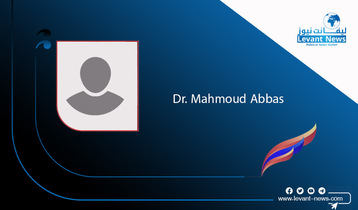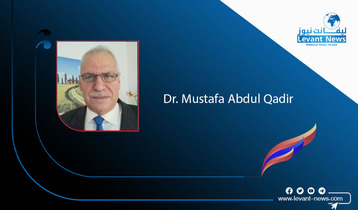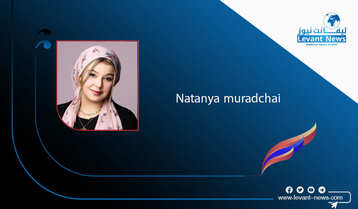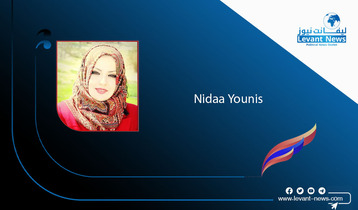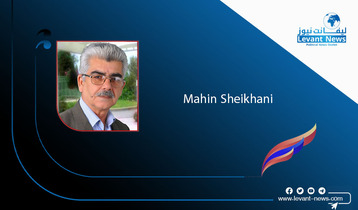-
The role of Hasaka's Yazidi House in rescuing genocide survivors

Prior to the announcement of the Kurdish –led Autonomous Administration of Rojava, and within the political turmoil prevailing Syria, Yazidis there were preoccupied with something else.
In 2008 the Yazidi community of Hasaka sought to set up a local Yazidi society. However, their efforts fell to the ground as security services of the Syrian regime denied it authorization. The idea was given up, however, temporarily.
With roots found in Mithraism and Mazdaism, the Yazidi religious mythology differs immensely from that of Islam and Christianity in the sense it is a non-missionary sect.
Depoliticized and invisibilzed, Yazidis saw in the so-called Arab Spring, to which Syria had a most substantial part, an opportunity to organize and run their internal and communal affairs.
On May 11, 2012, and after long months of deliberations, the first ever overall conference of Hasaka's Yazidis was convened. The long-awaited idea was materialized.
The ceremony that took place in the ancestral Yazidi village of Qazlachokh in Hasaka, was crowned with the establishment of the Yazidi House of Jazira (Hasaka Region).
The Yazidi House is an aid body that used to spot and bring in captors, give them medical treatment and facilitate their return to Shingal. Structurally, the house is made up of 52 members, 21 of them are females.
Religiously hierarchical and stratified, the idea of Yazidi house(s) is a newly devised one in the Yazidi community. "There had never been such houses in the Yazidi culture. The idea was modeled upon those houses set up in diaspora." Elias Sido, a Yazidi House member, who serves as the Co-chair of the Jazira Culture Body said in interview.
The newly born body served as the foundation stone for the Yazidi community in Hasaka for the years to follow substantially helpful for members of the sect in both Syria and Iraq.
The Yazidi house was recognized as an overall umbrella body for all Yazidi institutions in Rojava.
The onslaught on August 3, 2014, by fighters of the Islamic State (ISIS) against the Yazidi ancestral homeland of Shingal resulted in the forcible displacement to Syria of thousands of men, women and children. However, though the majority crossed to Kurdistan Regional Government, many, fearing that ISIS would attack them again, remained on Syrian soil.
With 1,293 people killed in the first days of the ISIS attack, the Islamic State abducted 6417 Yazidis men, women and children, according to figures from the Kurdistan Region's office for Rescuing kidnapped Yazidis. The majority, for strategic de-Yazidization ends, were transported to Syria. The Islamic State wanted Yazidis be separated from their ancestral homelands.
Much of the Yazidi women and girls were squeezed into Baghouz. After the capture by the Kurdish- led Syrian Democratic Forces (SDF) of Baghouz in March 2019 the House was flooded with Yazidi women, girls and boys.
Since then the house assumes the role of a mediator and a rehabilitation center where those freed from activity are introduced anew to the Yazidi community after long year of family loss, bereavement and sexual enslavement.
In June 2022, Rosetta Haj Baijo from the Shingal village of Tal Qasab was rescued from the al-Hol camp. She was handed over by the Yazidi House to her relatives. However, 2717 (1273 female and 1444 male) Yazidis remain unaccounted for up to date.
Notably, the capture of Baghouz facilitated the return of abducted Yazidis. However, in broader lines, ISIS's territorial loss made finding those still missing a more difficult mission.
The Hasaka Yazidi House was pivotal in rescuing and shielding Yazidi women and girls from captivity of the Islamic State until handed over to their families in Kurdistan Regional Government. In hindsight, it has proven a step in the right direction.
"The Yazidi House is the center of activities for the community and is perfectly placed to assist those Yazidis coming out of ISIS captivity as they reunite with their families," Nadine Maenza current President of the International Religious Freedom Secretariat and former head of the United States Commission on International Religious Freedom (USCIRF), who visited the House on several occasions, said via WhatsApp.
In close collaboration with the Kurdish- led authorities of Rojava, many Yazidis have been rescued from areas as far as Idlib in northwest and Daraa in the southwest.
Farouq Tozo, Co-chair of the Yazidi House says "413 Yazidis were spotted and rescued from Islamic State's captivity by the Yazidi House." Tozo noted that out of the 413, the total of 263 are women and girls and the remainder (150) are boys born to Yazidi fathers and mothers. Children born to fathers affiliated to the Islamic State, however, are not included in this data, Tozo confirmed.
However, the Yazidi House played another role, though not very much brought under the spot, however, substantially important and relevant.
"The Mala Ezidiya played an important role in the search for Yazidi children and women in al-Hol camp and cooperated with traditional religious leaders of the community. They also hosted survivors until they could return to Iraq and helped to find foster families for children of Yazidi women who were raped by IS fighters and who were not taken with their mothers to Iraq." Austrian researcher and author Thomas Schmidinger said.
With the bulk of the rescued coming from Baghouz, many of those assumed missing are believed to be held at the notorious al-Hol camp, some 45 kilometers in eastern Hasaka city. Prior to the recently launched security operation, there are "though unverified, however, 70 Yazidi women, at least, are believed to be held in the al-Hol camp," Farouq Tozo claims.
These either fear to disclose their true identities, or are not willing to do so, among other, they want to keep their ISIS born children.
The Yazidi House proved crucial in the aftermath of the fall of Baghouz in that it embraced and rendered medical treatment to Yazidi survivors and reuniting them with their families in Shingal. However, something is lucking.
"The U.S. and the international community should be giving them more financial resources as they support their own community still recovering from genocide," Maenza said.
In the past, Syrian Yazidis were invisiblized and remained in the darkness, now they unreservedly and openly celebrate their religious festivals and observe all the community's rituals and cultural festivities, however, their existential presence in their ancestral homelands strikingly remains a threatened one.
With conversions are not allowed and outer marriages are severely punished by the community, the Yazidi belief in maintaining ancient bloodlines and self-containment combined with the disallowance of new converts is causing the Yazidi religion to disappear.
BY: Lazghine Ya'qoube
You May Also Like
Popular Posts
Caricature
BENEFIT Sponsors Gulf Uni...
- April 17, 2025
BENEFIT, the Kingdom’s innovator and leading company in Fintech and electronic financial transactions service, has announced its sponsorship of the “Innovation and Sustainable Technology Solutions Competition (GU - IST Solutions), hosted by Gulf University at its main campus.
This strategic sponsorship reflects BENEFIT’s active role in advancing technological innovation and fostering sustainable solutions to future challenges. It also seeks to empower Bahraini youth by enhancing their skills, capabilities, and competitiveness in innovation and solution development—contributing meaningfully to the broader goals of sustainable development across all sectors.
As part of BENEFIT’s active involvement in the competition, the company has announced that Hanan Abdulla Hasan, Senior Manager of Public Relations and Communication, will serve on the competition’s supervisory committee. Her upcoming participation reflects BENEFIT’s forward-looking commitment to championing academic and professional excellence.
Commenting on the occasion, Hanan Abdulla Hasan, Senior Manager of Public Relations and Communication at BENEFIT, said, “We are privileged to support this pioneering initiative, which aligns seamlessly with BENEFIT’s enduring commitment to fostering innovation and nurturing the potential of Bahrain’s youth. Our participation is rooted in a deep sense of social responsibility and a firm belief in the pivotal role of innovation in shaping a sustainable future. Through such platforms, we seek to empower the next generation with the knowledge, skills, and foresight required to develop impactful solutions that address future challenges, in line with the United Nations Sustainable Development Goals 2030.”
Dr. Aseel Al Ayash Dean of the College of Engineering in Gulf University commented, “We extend our sincere gratitude to BENEFIT for their generous sponsorship and support of the Innovation and Sustainable Technology Solutions Competition. This contribution plays an instrumental role in helping us achieve the strategic goals of this initiative, namely, cultivating a culture of innovation and sustainability, encouraging efforts that address the imperatives of sustainable development, and enhancing the practical and professional capabilities of our students and participants.”
The event will bring together a diverse spectrum of participants, including secondary school students, university undergraduates, engineers, industry professionals, entrepreneurs, academic researchers, and subject matter experts representing a wide range of disciplines.
The competition seeks to inspire participants to develop and present innovative, sustainable technologies aimed at addressing pressing environmental, social, and economic challenges. It encourages the formulation of business models that integrate advanced technological solutions with core principles of sustainability. Moreover, it serves as a platform for emerging leaders, entrepreneurs, and innovators to contribute to the advancement of the Sustainable Development Goals, promote the ethos of responsible technology, and demonstrate its transformative potential across various sectors.
Attendees will have the opportunity to view a series of project presentations submitted by participants, covering diverse areas such as eco-friendly product design, smart and sustainable innovations, renewable energy technologies, water conservation and management, waste minimisation and recycling, green architectural solutions, and sustainable transportation systems. Outstanding projects will be formally recognised and awarded at the conclusion of the event.
opinion
Report
ads
Newsletter
Subscribe to our mailing list to get the new updates!

